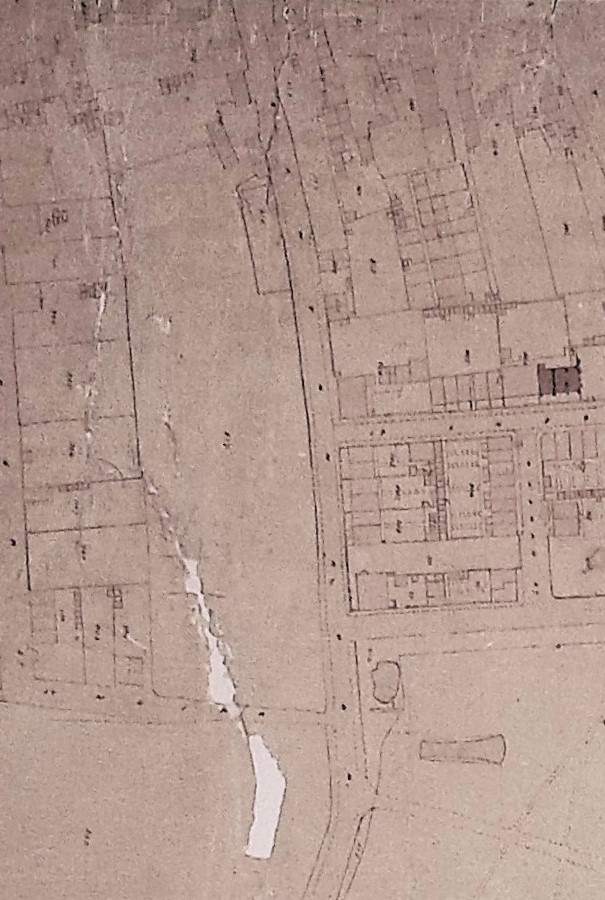This map shows “the very quiet Stanton Road” and is taken from a poor quality and damaged Local Board Map of 1866.
Down the centre of the map runs Stanton Road, from the White Lion Square area (and Job Derbyshire’s Farm on its left/west) to just south of Union Road (also off its left). Off its right you can see Regent Street and then Havelock Street below it, with Oxford Street joining those two streets.
What you will notice is how few premises had been built along that ‘main’ road, especially along its west side
Past the farm of Job Derbyshire Adeline points out that“old Gallimore’s steps and room were next.
“Just below the old Farm House was a flight of steps, with a handrail, and in the room above lived old Gallimore and his son, about seventeen or thereabouts.” This would be on the west side (near the top of the map above).
There were two related Gallimore (or Gallemore) families in Ilkeston both with partial origins in Wirksworth.
The family mentioned here by Adeline is probably that of William, a blacksmith who also later traded as a greengrocer.
He was baptised in Wirksworth in 1793, the son of John and Hannah. There, as a young man, he worked as a blacksmith and married Elizabeth Salt in 1814. Several children followed including son James, born in 1824.
After Elizabeth died, William married again in 1836 to Jane Seal, the widow of Edward Seal.
The couple arrived in Ilkeston about 1840 with their three-year old son Thomas. They were to be later joined by Jane’s son from her previous marriage, John Seal.
For a time William traded in Ball’s Yard, South Street but at the end of 1861 moved out, possibly into Stanton Road.
Adeline relates an encounter with the Gallimores: – One morning I went for some vegetables. I went up the steps, and on reaching the open door I saw a lad lying on the wooden squab. The room itself was very untidy. The round table had all the used breakfast things on it. The fireplace was choked with ashes. Skeps of potatoes and greenstuff were on the floor. A poor place for a healthy person to live in, but dreadful for anyone who was poorly. Mr. Gallimore was out, and when I said what I wanted the poor boy literally dragged himself off the squab to attend to me.
I told my mother how ill the poor boy was. She said ‘He had no mother to look after him, and his father had to leave him alone when he went about the business.’
There was no parish nurse, sanatorium or institution in those days, and people in cases like poor Gallimore’s had to depend on surrounding help, or put up with loneliness and neglect.
When I was last at Ilkeston three years ago, I went into Stanton Road and I saw again with my mind’s eye, those steps, the squalid room, and that poor boy lying on the inhospitable wooden squab, with no one to attend to him, just left there in his pain and weakness.
He did not live long after I first saw him, and it must have been a happy release to him when he was called home.
The son whom Adeline vividly recalled was probably Thomas, who died of phthisis on December 30th 1861, aged 23.
He did have a mother to look after him. Jane was still alive but died four months after her son, aged 65.
——————————————————————————————————————————————————–
walking on, down the lane we arrive at the site of Ilkeston General Cemetery


